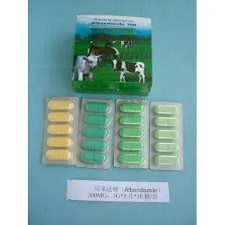- Afrikaans
- Albanian
- Amharic
- Arabic
- Armenian
- Azerbaijani
- Basque
- Belarusian
- Bengali
- Bosnian
- Bulgarian
- Catalan
- Cebuano
- Corsican
- Croatian
- Czech
- Danish
- Dutch
- English
- Esperanto
- Estonian
- Finnish
- French
- Frisian
- Galician
- Georgian
- German
- Greek
- Gujarati
- Haitian Creole
- hausa
- hawaiian
- Hebrew
- Hindi
- Miao
- Hungarian
- Icelandic
- igbo
- Indonesian
- irish
- Italian
- Japanese
- Javanese
- Kannada
- kazakh
- Khmer
- Rwandese
- Korean
- Kurdish
- Kyrgyz
- Lao
- Latin
- Latvian
- Lithuanian
- Luxembourgish
- Macedonian
- Malgashi
- Malay
- Malayalam
- Maltese
- Maori
- Marathi
- Mongolian
- Myanmar
- Nepali
- Norwegian
- Norwegian
- Occitan
- Pashto
- Persian
- Polish
- Portuguese
- Punjabi
- Romanian
- Russian
- Samoan
- Scottish Gaelic
- Serbian
- Sesotho
- Shona
- Sindhi
- Sinhala
- Slovak
- Slovenian
- Somali
- Spanish
- Sundanese
- Swahili
- Swedish
- Tagalog
- Tajik
- Tamil
- Tatar
- Telugu
- Thai
- Turkish
- Turkmen
- Ukrainian
- Urdu
- Uighur
- Uzbek
- Vietnamese
- Welsh
- Bantu
- Yiddish
- Yoruba
- Zulu
10 月 . 02, 2024 09:43 Back to list
Gentamicin Sulfate Combined with Betamethasone Valerate for Enhanced Therapeutic Effects
Gentamicin Sulfate and Betamethasone Valerate A Comprehensive Overview
Gentamicin sulfate and betamethasone valerate are notable pharmaceutical compounds widely used in different medical fields, particularly in dermatology and the treatment of infectious diseases. While each compound has unique properties and applications, together they offer a combination of antibacterial and anti-inflammatory effects, making them particularly effective in treating various skin conditions and infections.
Gentamicin Sulfate
Gentamicin sulfate is an aminoglycoside antibiotic derived from the bacterium Micromonospora purpurea. It works by inhibiting bacterial protein synthesis, leading to the death of susceptible bacteria. Primarily effective against Gram-negative bacteria, gentamicin is often used to treat serious infections caused by these pathogens, including those associated with urinary tract infections, respiratory tract infections, and sepsis.
Due to its effectiveness, gentamicin has been a crucial antibiotic in clinical settings. However, its use can be limited by potential side effects, including nephrotoxicity and ototoxicity, especially with prolonged therapy or high doses. Thus, careful monitoring of kidney function is recommended when administering this medication. In dermatological applications, gentamicin is often found in topical formulations, helping to manage local infections while minimizing systemic exposure.
Betamethasone Valerate
Betamethasone valerate, on the other hand, is a potent corticosteroid used primarily for its anti-inflammatory, immunosuppressive, and antipruritic properties. It operates by inhibiting the inflammatory response and suppressing the proliferation of various immune cells. This makes it particularly useful in treating inflammatory skin conditions such as eczema, psoriasis, and dermatitis.
gentamicin sulfate and betamethasone valerate

The effectiveness of betamethasone valerate can be attributed to its ability to reduce redness, swelling, and itching associated with inflammatory skin issues. It is available in several formulations, including creams, ointments, and lotions, making it versatile for topical application. However, due to its potency, the duration of use should be limited to avoid potential adverse effects, such as skin atrophy or the development of steroid-induced acne.
Combination Therapy
The combination of gentamicin sulfate and betamethasone valerate presents a powerful therapeutic option. This combined therapy can be particularly effective in managing conditions where both infection and inflammation are present, such as in infected eczema or secondary bacterial infections in psoriatic lesions. The gentamicin component addresses the bacterial infection, while the betamethasone component tackles the underlying inflammation and itching.
When used in conjunction, these two medications can shorten recovery time and improve patient outcomes. The anti-inflammatory effects of betamethasone help alleviate symptoms that may otherwise impede healing, while gentamicin prevents bacterial overgrowth, reducing the risk of infection that can arise in damaged skin.
Considerations and Recommendations
While gentamicin sulfate and betamethasone valerate are valuable in treating various conditions, clinicians must consider patient-specific factors before prescribing them. The potential for side effects, drug interactions, and the patient’s overall health status should be evaluated. It is essential for healthcare providers to educate patients on the correct application methods and the importance of adhering to prescribed dosages to ensure optimal results and minimize risks.
In conclusion, gentamicin sulfate and betamethasone valerate represent a significant advancement in the management of bacterial infections and inflammatory skin conditions. Their combined use provides a synergistic effect that enhances treatment efficacy, offering a comprehensive therapeutic approach. As with all medication regimens, careful consideration of the benefits and risks associated with their use is essential for achieving the best patient outcomes.
-
The Power of Radix Isatidis Extract for Your Health and Wellness
NewsOct.29,2024
-
Neomycin Sulfate Soluble Powder: A Versatile Solution for Pet Health
NewsOct.29,2024
-
Lincomycin Hydrochloride Soluble Powder – The Essential Solution
NewsOct.29,2024
-
Garamycin Gentamicin Sulfate for Effective Infection Control
NewsOct.29,2024
-
Doxycycline Hyclate Soluble Powder: Your Antibiotic Needs
NewsOct.29,2024
-
Tilmicosin Premix: The Ultimate Solution for Poultry Health
NewsOct.29,2024













